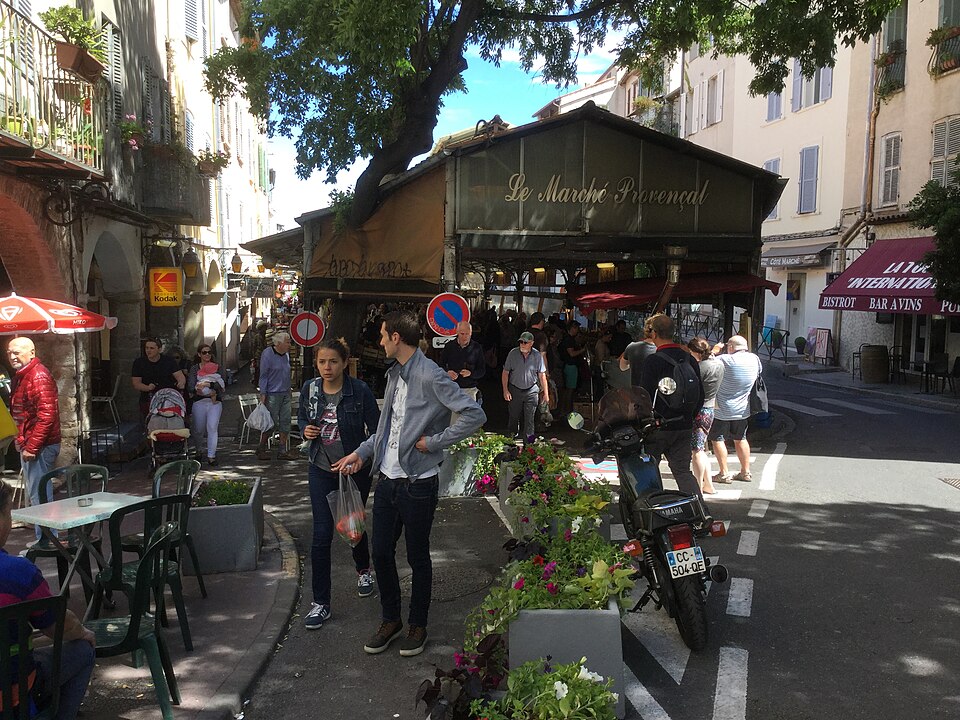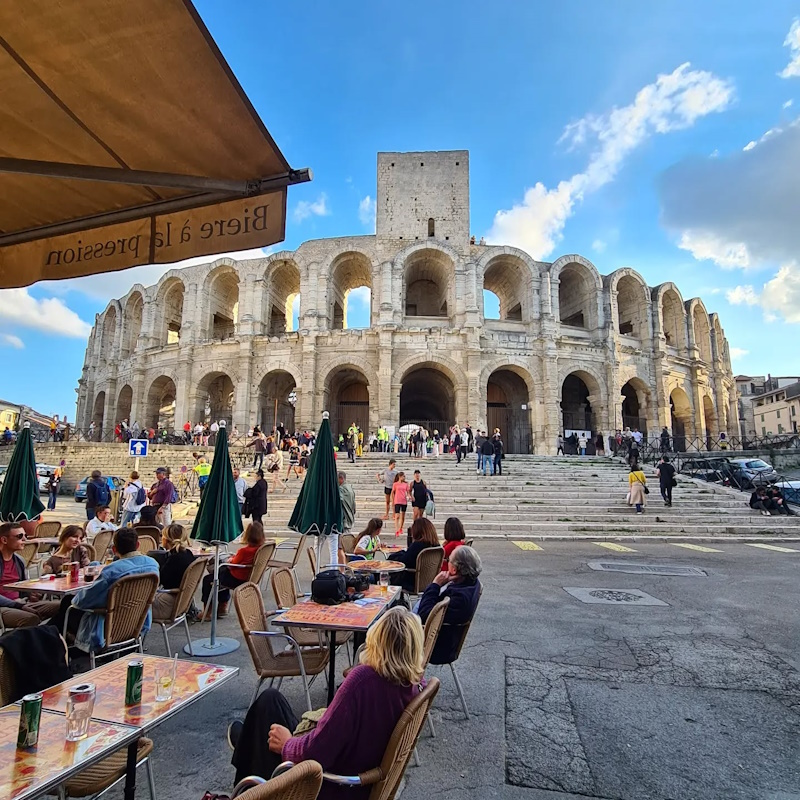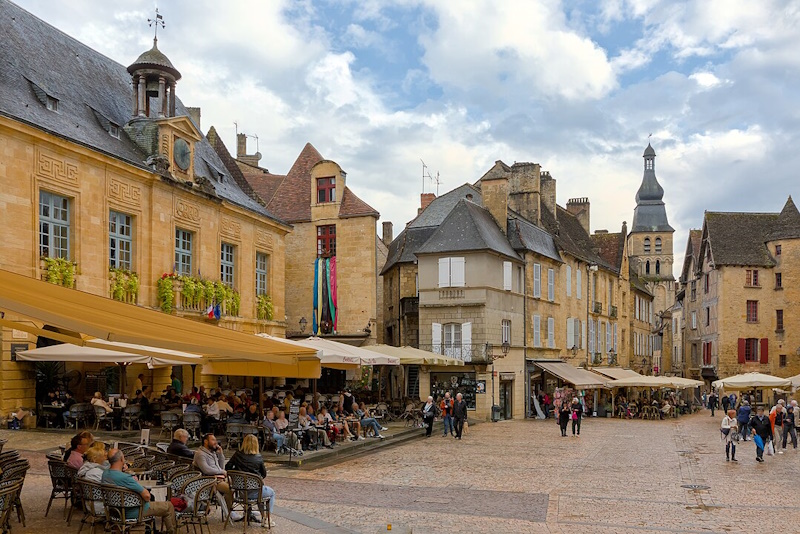10 Top Places to Retire in France
Retiring in France isn’t only about sunshine or scenery. The real question is where daily life stays easy – good healthcare nearby, walkable streets, steady year-round life, and a climate you can handle.
The towns below stand out because they work in practice, not on postcards. Each one has the services, transport links, and community structure that make long-term living comfortable, especially for English-speaking retirees who want a smooth transition.
1. Nice

Nice is the largest city on the Riviera, which means retirees get full services without needing to drive. The tram network connects the airport, hospitals, and most neighborhoods.
The CHU hospital system has a strong reputation, and English-speaking medical staff are easier to find here than in smaller towns.
The climate stays mild through winter, and the city remains active year-round thanks to universities, galleries, and festivals.
The coastal path, Promenade du Paillon, and markets offer easy routines for people who want to stay active without steep hills.
2. Antibes

Antibes offers quieter living than Nice while keeping the same coastal benefits. The old town is compact and walkable with local shops, cafés, and a covered market that runs throughout the year.
Retirees often choose Antibes because it has both neighborhood life and the large Port Vauban marina, which brings an international community.
Healthcare access is strong: Juan-les-Pins and Antibes share several clinics, and Nice’s hospitals are about 30 minutes away.
The TGV station connects to Paris, and regional trains link the entire coastline.
3. Uzès

Uzès appeals to retirees looking for a slower pace without isolation. The town has a weekly market that fills the historic center with local producers, and the surrounding countryside is easy to navigate.
Living costs are lower here than in the Riviera, and property options include renovated stone houses and modern apartments.
Nîmes and Avignon are close enough for major healthcare, high-speed trains, and cultural outings.
Summers are warm, winters are mild, and the town stays alive outside tourist season thanks to its resident population and events at the Duché and the center for contemporary dance.
4. Annecy

Annecy consistently ranks high for quality of life because it balances city comforts with natural surroundings.
The lakefront paths and flat cycling routes make it ideal for retirees who want daily outdoor activity.
The healthcare system is well-developed, with hospitals and specialist clinics in the city and nearby Geneva.
The old town is fully walkable, and buses link all districts. Geneva Airport is reachable in under an hour for long-distance travel.
While winters are colder than in the south, public services run smoothly and the cultural program is strong throughout the year.
5. Arles

Arles works for retirees who want a cultural base with a steady rhythm. It has Roman monuments, museums, galleries, and festivals that spread out across the calendar rather than clustering in summer.
The size of the town makes daily life manageable, and most errands can be done on foot. The train station offers direct service to Avignon and Nîmes for hospital visits or TGV connections.
The surrounding areas include the Camargue, with open wetlands and quiet villages that offer easy day trips.
Housing options range from old stone townhouses to apartments in residential districts with local shops.
6. Saint-Rémy-de-Provence

Saint-Rémy is one of the most comfortable towns in the Alpilles area for long-term living. The circular center has shops, pharmacies, cafés, and a large weekly market.
Many retirees choose it because you can live close to services without relying heavily on a car. The area is green, with walking paths leading toward the hills.
Avignon is about 25 minutes away for larger hospitals, specialist care, and high-speed trains. The town maintains a steady rhythm even in winter thanks to local residents, small restaurants, and cultural events.
7. Sarlat-la-Canéda (Dordogne)

Sarlat is a strong option for people who want a quieter lifestyle with a strong sense of place. The Dordogne has one of the highest concentrations of English-speaking residents in France, which helps newcomers integrate.
The cost of living tends to be lower than in major cities, and housing options include stone houses in the countryside and apartments in town.
Sarlat has a twice-weekly market and many local food producers. While more rural than the other towns on this list, essential services are available in town, and larger hospitals are accessible in Périgueux and Bergerac.
8. La Rochelle

La Rochelle is a coastal city with a strong reputation in retirement rankings thanks to its balance of seaside living and urban services. The old port, covered markets, cultural centers, and walkable neighborhoods make daily life straightforward.
The city has a university, which helps keep services active throughout the year rather than only in summer.
Healthcare access is solid, with the Centre Hospitalier de La Rochelle covering most needs.
The airport offers flights within France and to nearby countries, and the TGV links to Paris in about three hours.
9. Honfleur

Honfleur suits retirees who prefer a smaller coastal town with easy access to bigger cities. The historic center has shops, galleries, restaurants, and a year-round population that supports local life outside peak season.
Deauville, just across the Seine estuary, provides larger medical facilities, and Le Havre and Caen offer full hospital systems.
Housing costs vary widely depending on proximity to the old port, but surrounding villages offer quieter and more affordable options.
The climate is cooler than the south, but summers are pleasant, and the town rarely shuts down in winter.
10. Vannes

Vannes is a practical base on the Gulf of Morbihan. The walled center is compact, with shops, cafés, markets, and medical services all within easy walking distance.
The CHBA hospital sits inside the city, and regional trains link you to Rennes and Nantes for specialists or major travel connections.
The climate stays mild, and the coastline around the gulf offers flat paths and small ports that work well for everyday routines.
The town stays active throughout the year, which makes it comfortable for long-term living.
To Conclude
Each of these towns works for one simple reason: daily life stays practical. Services are close, transport is reliable, and the rhythm doesn’t collapse in winter.
The next step is trying a short stay off-season to see how the town feels when the crowds are gone. If the pace, weather, and access to essentials fit your routine, it’s a solid foundation for a long-term move.
